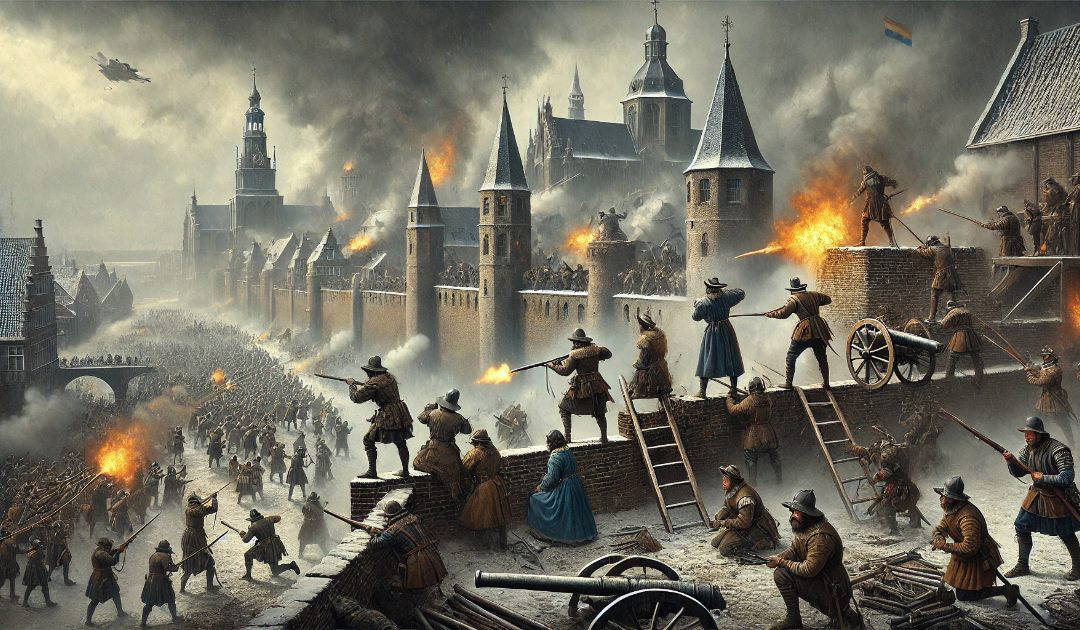On This Day tells me that on 17th December 1572 the Spanish set fires in Haarlem, in the Netherlands, during the Eighty Years War. Sir Anthony Standen was sent by Walsingham as a spy during that war. In my account of his incredible life, The Spy who Sank the Armada, Anthony is in Mechelen when the Spanish capture and pillage the city on 2nd October 1572. It’s possible that he was in Haarlem, but I didn’t place him there.
Haarlem, a city in the province of Holland, was strategically important due to its proximity to Amsterdam and the waterways in the region. The Dutch rebels, who were largely Protestant, sought to resist the Spanish Catholic forces attempting to reassert control over the Low Countries.
In late 1572, the city aligned itself with the rebel forces of William of Orange, the leader of the Dutch resistance against Spanish rule. This defiance prompted a swift response from the Spanish commander, Don Fadrique, the son of the Duke of Alva.
By December 1572, Spanish forces encircled Haarlem, beginning a brutal siege that lasted for seven months, stretching into 1573. The Spanish army, numbering around 30,000 men, was significantly larger than Haarlem’s defenders, which included around 4,000 soldiers and armed civilians.
The citizens of Haarlem, including women and children, played a vital role in the city’s defense. Stories of women like Kenau Simonsdochter Hasselaer, who led groups of women in the resistance, became legendary. Despite being outnumbered, the defenders used innovative tactics, including digging tunnels and creating makeshift weapons.
The siege was marked by extreme suffering. Supplies within the city dwindled, leading to starvation and disease. The Spanish forces, known for their harsh tactics, committed atrocities, including executing captured defenders as a warning. After seven months of resistance, Haarlem finally surrendered. The Spanish executed over 2,000 soldiers and citizens in retaliation, and the city was heavily looted. However, the brutal siege and the high cost to Spanish forces (thousands of casualties) demonstrated the resilience of the Dutch and inspired resistance in other cities.
Although Haarlem fell, the prolonged resistance delayed Spanish efforts to consolidate power in the region. This allowed other cities, such as Alkmaar, to organize their defenses and resist subsequent sieges. It marked a turning point in the Dutch Revolt, galvanizing support for the rebel cause. The Siege of Haarlem remains a symbol of Dutch perseverance and defiance in the face of overwhelming odds.

